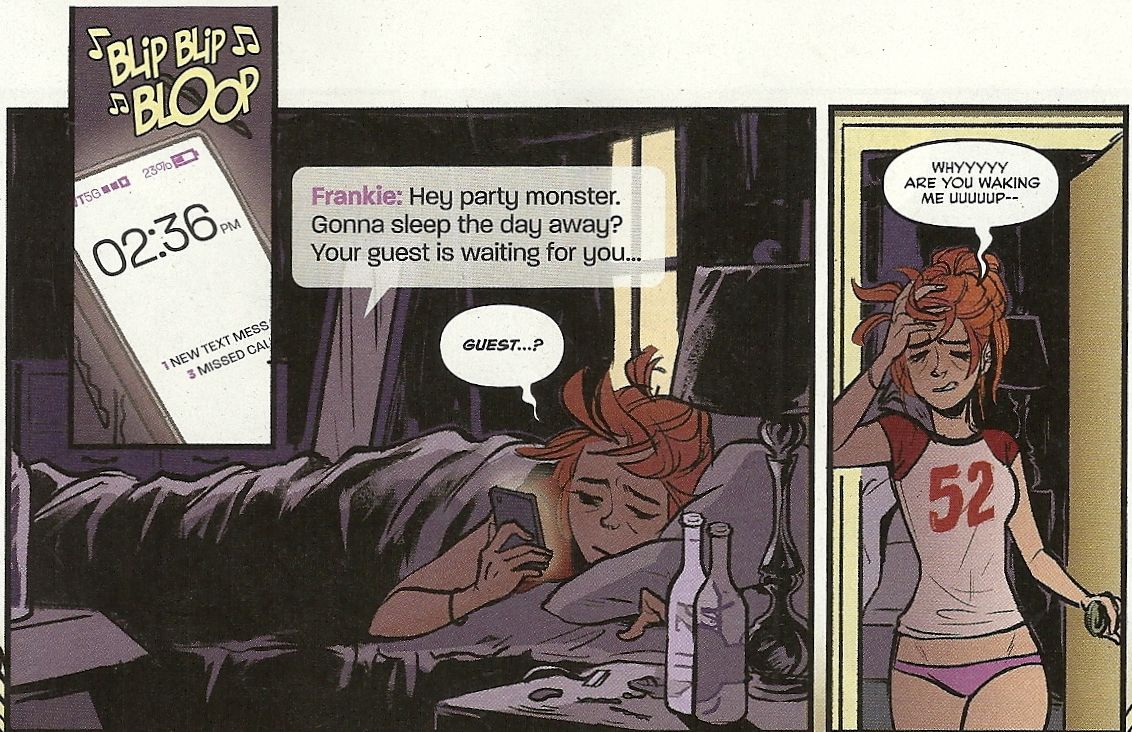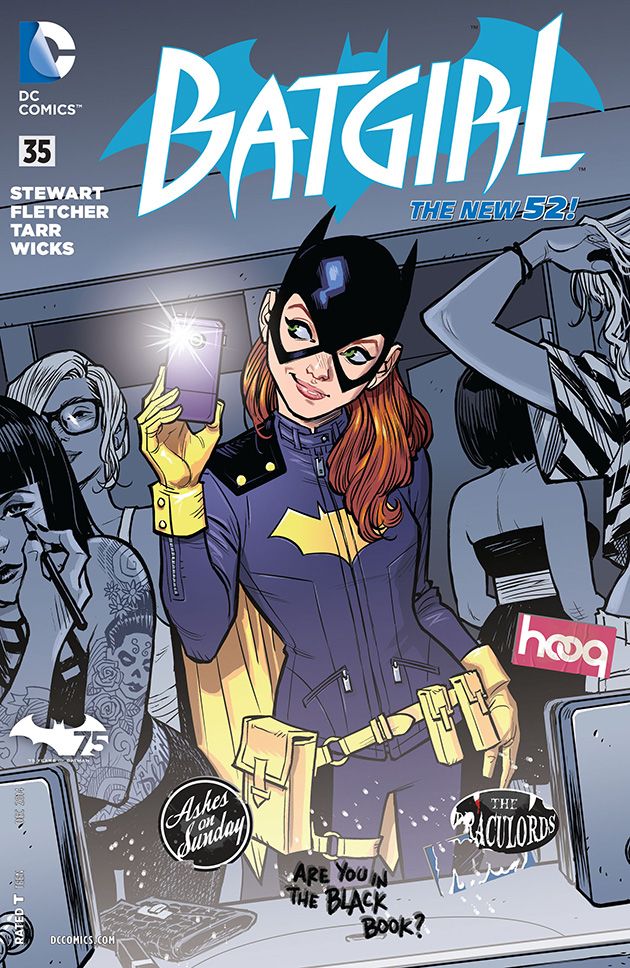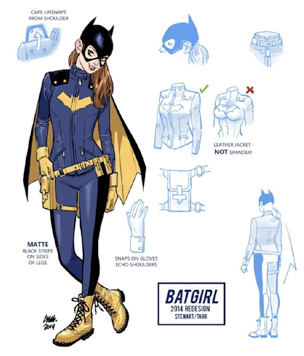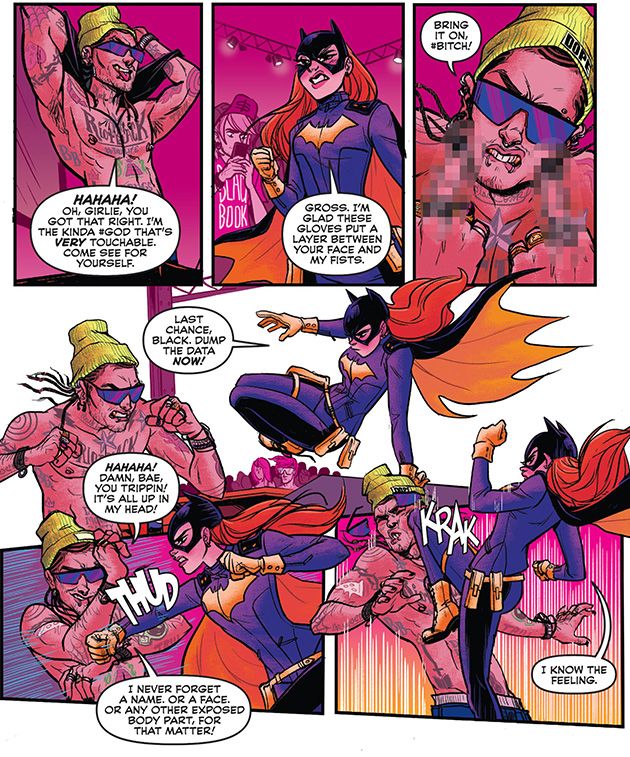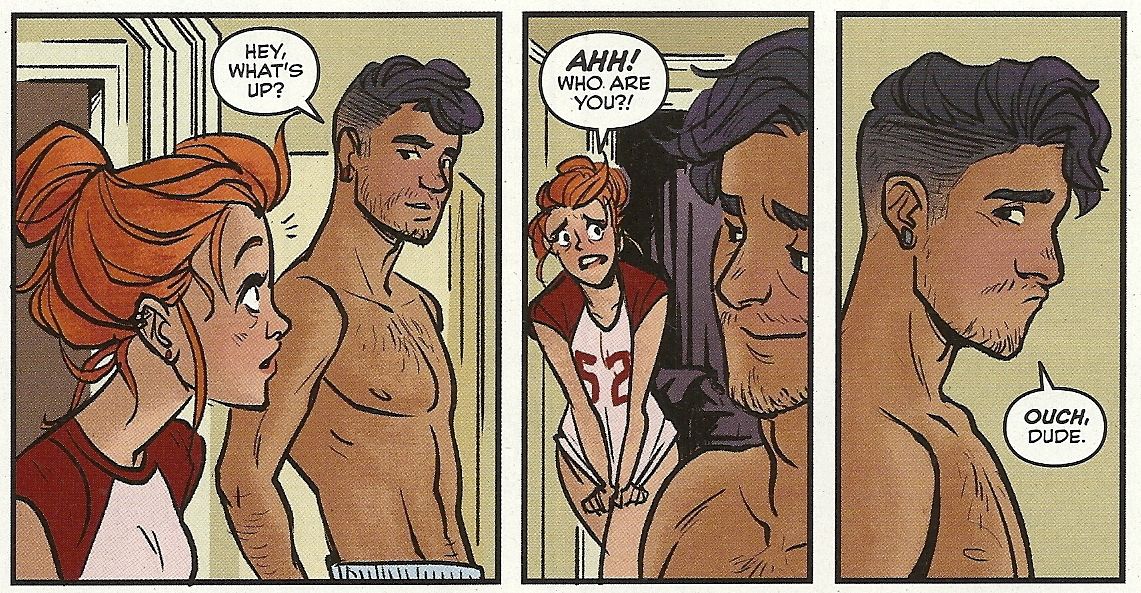It would be awfully hard to overstate the enthusiasm out there for Batgirl #35. As soon as the new creative team of Cameron Stewart, Babs Tarr and Brenden Fletcher was announced, social media was buzzing; hell, it was singing. Fan art of the new costume began appearing online immediately, and cosplayers started dressing the new Batgirl based on nothing more than the initial promotional images and cover.
I can't recall the last time I've seen this much enthusiasm for a DC Comics production. Universe-shaking developments -- deaths, resurrections, infinite crises -- major crossovers, and new series from the hottest creators are generally greeted with a dose of cold water from a certain faction of fans. DC readers tend to fall somewhere between "cautiously optimistic" and "openly hostile" when it comes to the publisher's big decisions. But, for whatever reasons, I've seen none of that cynicism regarding the new direction of Batgirl.
Which is a long way of saying that expectations for this particular issue of this particular series are, in most quarters that care about such things, sky-high.
There are only ever three things that can happen with expectations: They can be met, they can fail to be met, or they can be exceeded. And, in general, the higher the expectations are, the less likely they are to be met.
So, as a comic book, how is Batgirl #35 ...?
Let's back up a bit and review. In September 2011, DC relaunched its entire superhero line under the banner of "The New 52," presenting 52 monthly series set in a rebooted universe with a radically altered continuity joined already in-progress (five years in, to be exact).
Among these was Batgirl, written by Gail Simone and drawn by Ardian Syaf and Vicente Cifuentes and Ed Benes and Daniel Sampere and Fernando Pasarin and others, almost all of whom were familiar names from rather extensive work for DC. The Batgirl of the title was now Barbara Gordon, resuming the codename after spending the previous 23 years (our time) as Oracle, and seemingly being rather dramatically de-aged in the process.
Like the rest of the New 52 characters, Batgirl received a new, if not necessarily improved, costume that looked like something created for a live-action superhero movie rather than a design a comic artist would want to draw over and over again. And she plunged headlong into dark, violent and mostly boring stories that appeared little different from those in about half the books in the Batman line.
All of which was a large part of the reason why the announcement of a new creative team, a new costume and a new direction was met with so much enthusiasm, I'm sure. Late 2014's Batgirl #35 seems like everything 2011's Batgirl #1 should have been.
A new creative team bringing fresh voices to DC Comics? Check. A new, modern look for Batgirl that's better, rather than worse, than what she was rocking in the late 1980s? Check. An easily accessible jumping-on point for readers unfamiliar with the character? Check.
If DC editorial had access to a time machine, they wouldn't go back and launch 51 more books like the new Batgirl — one of the problems with the New 52 was, after all, that too many of the books were too similar in look and tone — but you can be sure they would launch a few more.
It's actually odd DC didn't slap a #1 on the cover instead of continuing the current volume of Batgirl, given how different the issue is from what preceded it.
The writing team of Cameron Stewart and Brenden Fletcher do acknowledge the character's New 52 past to a degree, but this issue is mostly about a new beginning. Barbara Gordon moves into a new apartment with a new roommate in a new neighborhood, Burnside, where the hipper and hipster Gothamites live.
She lost her costume and equipment in a fire (one that also claimed Black Canary's costume, dojo and home), so Babs is forced to cobble together a new outfit pretty quickly, presumably without the benefit of Bruce Wayne's money or Alfred's Spandex- and Kevlar-sewing skills.
And in the course of introducing us to the new setting and the new supporting cast, the creative team also reintroduces Barbara Gordon, a brilliant, hard-working grad student with a photographic memory and what seems to be a fun hobby of dressing up like Batman to fight crime (and despite the sucky circumstances, she does have a certain amount of fun as a superhero; the vocation doesn't seem like the never-ending torture chamber it often did in the previous issues.
Stewart and Fletcher's script is wonderfully economical, and a perfect example of a first issue. I imagine the shift in tone could cause a sort of whiplash in readers who have followed the series since the No. 1, but if one has a difficult time reconciling the Batgirl of the first 34 issues with this one, well, the fact that this issue is really well-written and by far the best-looking installment of the series to date should help.
When the mandatory superhero plot emerges, I admit I wondered if I wasn't really the audience for this book after all, while also second-guessing Stewart and Fletcher's decisions. Were they over-correcting when they took that hairpin tonal turn?
The issue features Batgirl fighting social media-related crime through a variety of DCU versions of real-world platforms like Tinder, Snapchat and Instagram. The villain ends sentences with "yo," calls Babs "bae" and actually speaks in hashtags, which must be awkward to pronounce.
Does he say "hashtag God" or "number sign God" or ... what?
I've no reservations about the art, however, which Babs Tarr draws over Stewart's breakdowns. First, there is a lot of it; it's not uncommon for pages in this issue to have nine or more panels, resulting in a 20-page book that reads more like 32 or 48.
Secondly, its looks like nothing else DC is publishing in its New 52 line, which, given the company's recent reliance on a WildStorm-derived house style, is incredibly refreshing.
Thirdly, it's good. Tarr's characters are instantly distinguishable from one another. Her young people actually look like young people. Barbara and most of the other cast are realistic, cute and sexy, all at the same time.
There's a bit of cheesecake ...
but it's served right alongside a bit of beefcake.
And there's an overall incredible attention to detail, from the items on the counter of Babs' new apartment, to the logo for coffee shop Chiroptera, to the fashions and hairstyles of the 30-plus characters who appear in a splash panel of a housewarming party.
Tarr is an incredible talent, and it's great to see her get such a splashy showcase for her work.
I'm jaded enough a comics reader that, at this point, I didn't have any concrete expectations for the book, beyond the fact that Tarr's art and Stewart's cover made it look like a Batgirl comic I wouldn't mind reading, whereas my thoughts on Batgirl #1 were somewhere along the lines of "Yuck" and "What is she wearing?"
So I don't know if I can really state whether Batgirl #35 met, failed to meet or exceeded my expectations. I guess I'll settle for met; the Tarr and Stewart art, colored by Maris Wicks, exceeded my expectations, while the script could have been a little stronger.
There's room for improvement, as there almost always is. But the improvement between Batgirl #34 and Batgirl #35 was so great, that I'm more than willing to stick around and watch the new guys make their already pretty good book better.

